“Wow” Was Our Benchmark
Designing for impact at Arnold Worldwide's global headquarters
 Sasaki
Sasaki
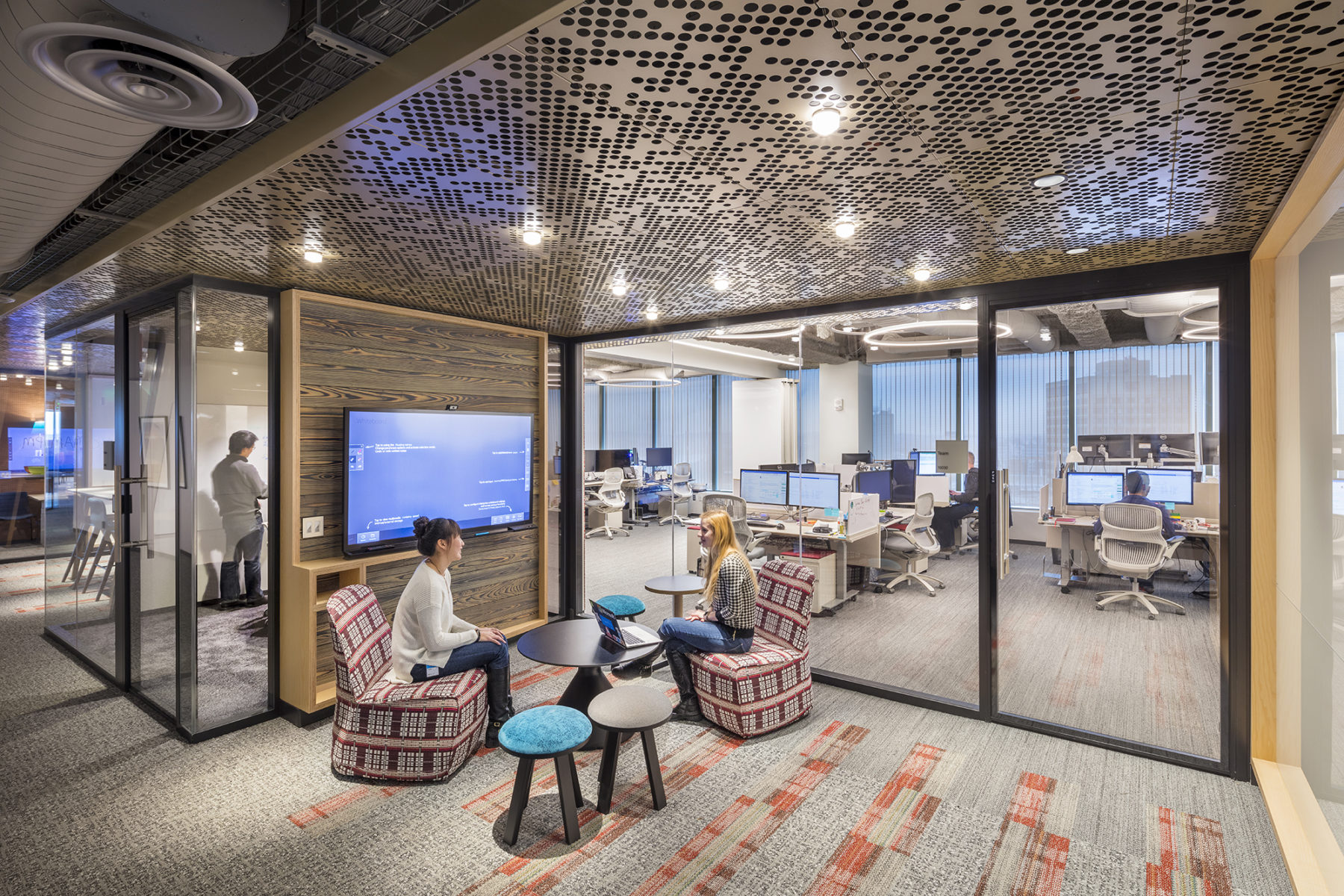
The real estate industry is captivated by a co-working trend that commodifies design into pre-packaged, one-size-fits all offices for lease. Investor- and media-darling, WeWork, in particular is driving much of this demand. Their offices have sprung up in every major American city, touted as the “Next Big Thing in Corporate Real Estate,” and in a recent New York Times piece, dubbed the “Healer of Our Fractured Society” by WeWork’s CEO, no less. The excitement around their potential is potent as companies small and large continue to sign leases in exchange for industrial surrounds that are endlessly instagrammable. It is one very fine option for a particular set of workers and companies, but do not be mistaken: it is not for everyone.
The real estate industry is captivated by a co-working trend that commodifies design into pre-packaged, one-size-fits all offices for lease. Investor- and media-darling, WeWork, in particular is driving much of this demand. Their offices have sprung up in every major American city, touted as the “Next Big Thing in Corporate Real Estate,” and in a recent New York Times piece, dubbed the “Healer of Our Fractured Society” by WeWork’s CEO, no less. The excitement around their potential is potent as companies small and large continue to sign leases in exchange for industrial surrounds that are endlessly instagrammable. It is one very fine option for a particular set of workers and companies, but do not be mistaken: it is not for everyone.What WeWork gets right is the fundamental embrace of open-office plans, attention to trendy aesthetics, and a business model that presents accessible pricepoints to individuals and companies—unlocking spaces for a whole new host of workers. This package is suited perfectly to individuals, small startups, or remote groups of workers for whom a large custom-build-out just would not make sense. However, increasingly, large blue-chip companies are also turning to WeWork instead of building their own offices, with significant hidden costs that may not manifest immediately, but can have lasting ramifications for their businesses down the line.
Brand is potentially the single most important facet of a corporation, as it is their public identity. We, as architects and designers, find brand is essential to design. So when we hear about companies buying into a generic branded environment that speaks nothing of their own brands, we question what that means for their reputations over time. Branding is core to most businesses and to throw away the investment in brand at the front door of the physical office is short-sighted.
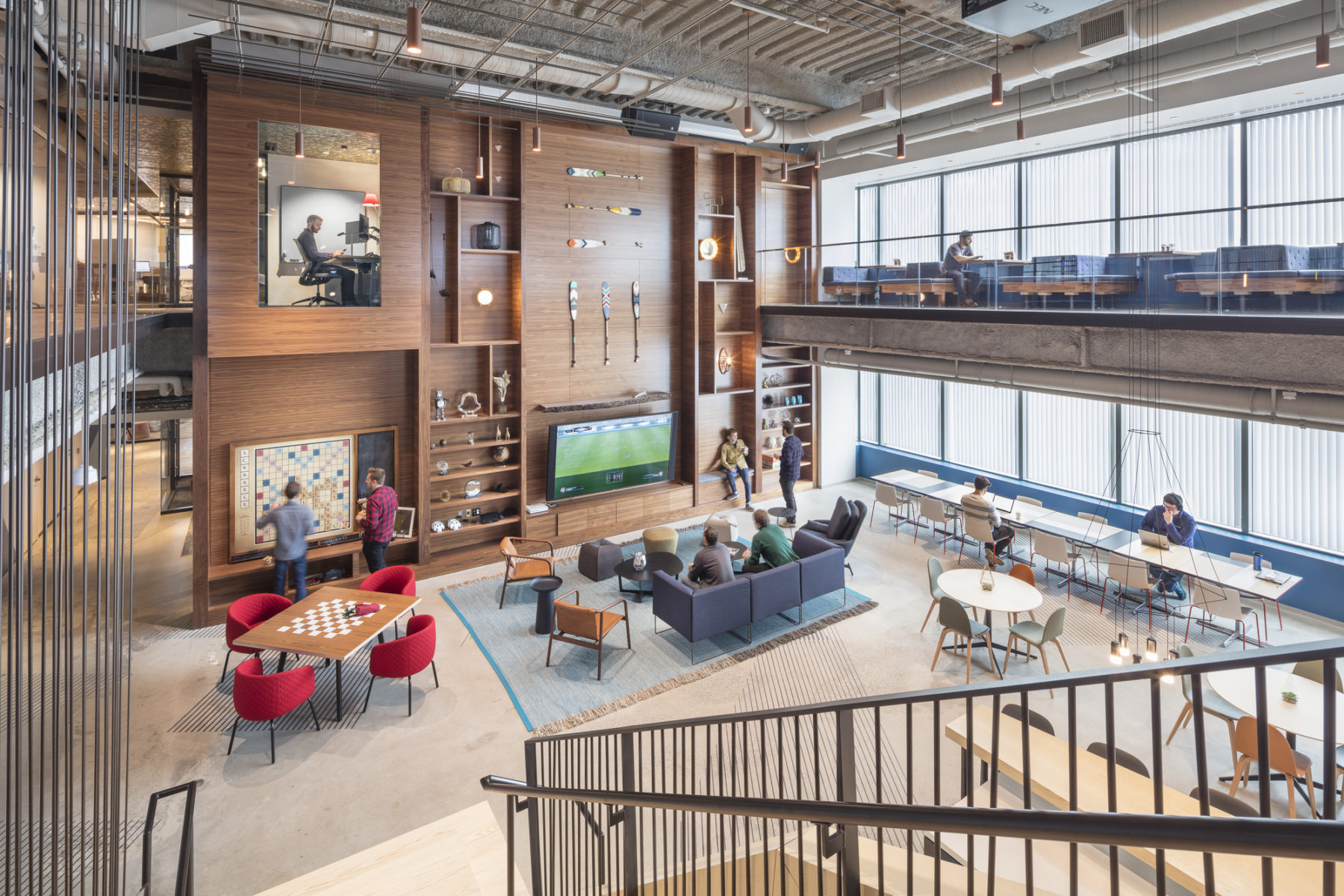
For one tech giant in Cambridge, MA, brand extends beyond a logo on the door; every detail is designed for the specific needs of their employees and channel the aesthetics of leading tech startups. For a creative tech company where collaboration and separate spaces for concentrated work are both in equal demand, providing variety of space with integrated technology was an absolute must
The physical environment remains a key touchpoint for two core audiences: employees and clients. It’s the physical manifestation of identity and mission that can make or break an impression with prospective clients and has the greatest bearing on employee work experience day in and day out. To get office-design right or wrong, has implications on business development, recruitment, productivity, and, retention; and when people are often the most valuable asset for companies, it’s imperative to get these elements right.
Physical place-branding has always been important, but at this moment, twenty years into the internet-generated digital age, it matters all the more. Today, ideas, businesses, and social and professional relationships can all live online. By contrast, companies investing in their people and their firms through physical space send a different signal to employees looking for tangibility and permanence in their employers.
On our office design projects, we see the way employees respond to employers that invest in creating the right environments for their employees, who care about crafting a brand and conveying it consistently, and who put a stake in the ground around their long-term future: employees feel they are part of a company with staying power, that will be around in five years. And they feel taken care of. It’s difficult to put a number to that kind of value-creation, but over the long-haul, conveying quality, longevity, vision, and care in people is a vital input for sustained employee engagement, productivity, and retention that should not be underestimated.
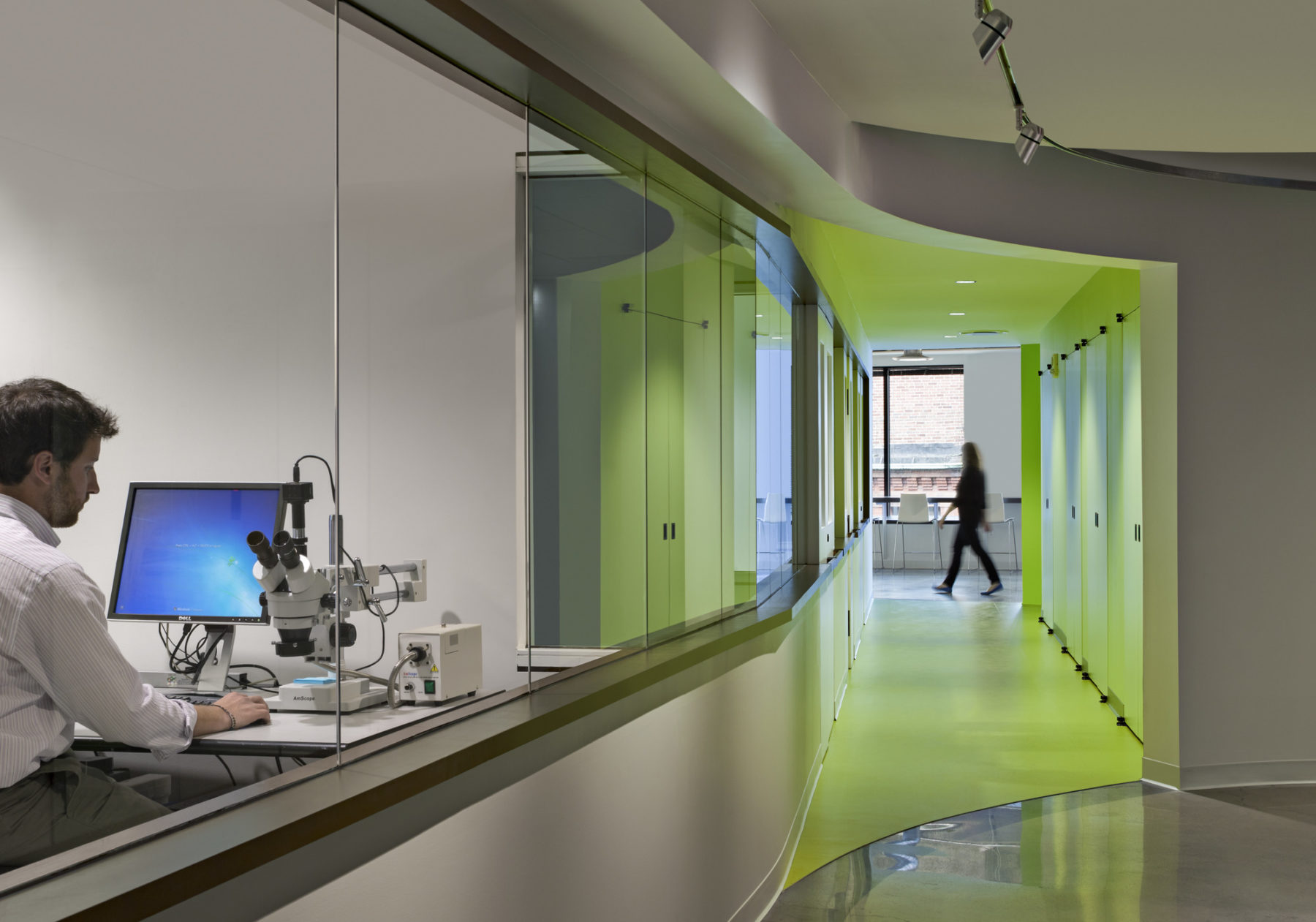
Product development and technology firm, Cambridge Consultants, invested in a branded workplace that included a crafted tour sequence creating a memorable impression for first-time visitors and returning employees
“Clients tell us how they want their employees to ‘live their brands’, but with a solution like WeWork, employees get a different message: to experience the WeWork brand while supporting the mission of their own respective organizations,” says Victor Vizgaitis, AIA, who heads Sasaki’s commercial architecture and interiors practice. “You can see how that message is muddled. I see it as a huge missed opportunity when companies outsource the branded work experience in exchange for WeWork’s one-size-fits all brand. WeWork has created a phenomenal brand—and it’s trendy—but it’s not right for everyone and it won’t be cutting-edge forever. You have to wonder what happens when the industrial living room is no longer the embraced aesthetic for every space, from a coffee shop to an insurance office.”
That is to say: there is no one-size-fits-all when it comes to workplace design. Good design, by its very definition, is context and identity-specific, solving for issues and concerns tied to each client’s unique challenges and goals. For example, clients often come to us with core business issues that seemingly have little to do with design:
“When new clients walk through the door they don’t understand that we actually create things here.”
“Our workforce is young and tech-savvy but also disinclined to interact with one another, which is a problem when collaboration is the lifeblood of our creative output.”
“We keep losing our best and brightest to rivals in the city. We can’t seem to compete in the suburbs, but we have to if we are going to survive.”
These questions get our creative energies charged up. What designers do is solve problems with design as a toolset. The common perception that designers merely beautify is one of the most persistent myths surrounding this industry. As consumer-facing design houses like Apple or Muji make apparent, elegant design goes beyond beauty to solve human needs and can yield major growth opportunities. Environmental and experiential design is no different. Through deep analysis of qualitative and quantitative data, benchmarking across industries, and recognition of context-specific design opportunities, we as interior architects unlock the program and design that best serves high-level strategic aims and day-to-day operational goals so that companies can perform better.
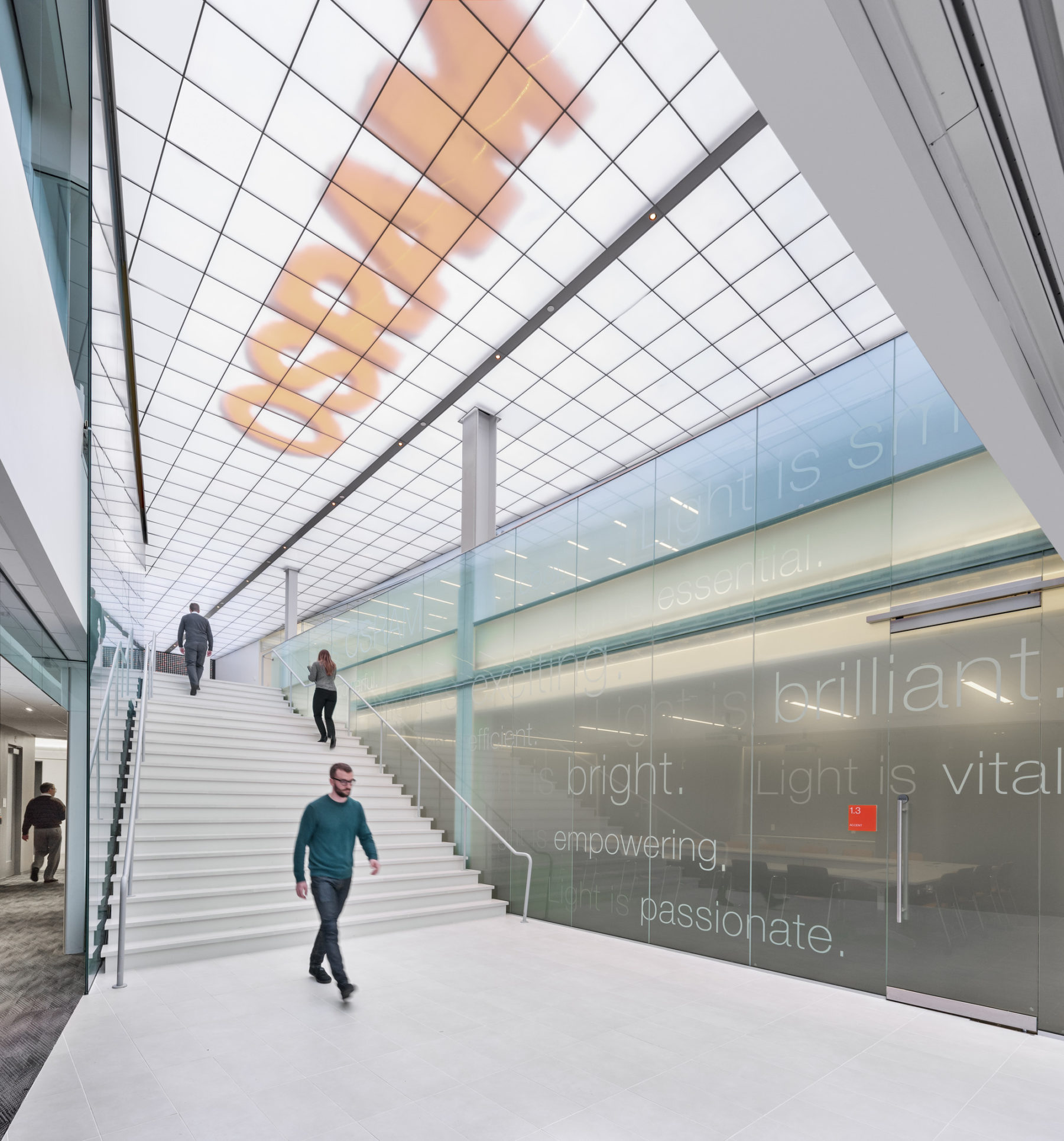
For any visitor to the Osram Americas Headquarters, there’s no mistaking that this company is in the business of light technologies and product development
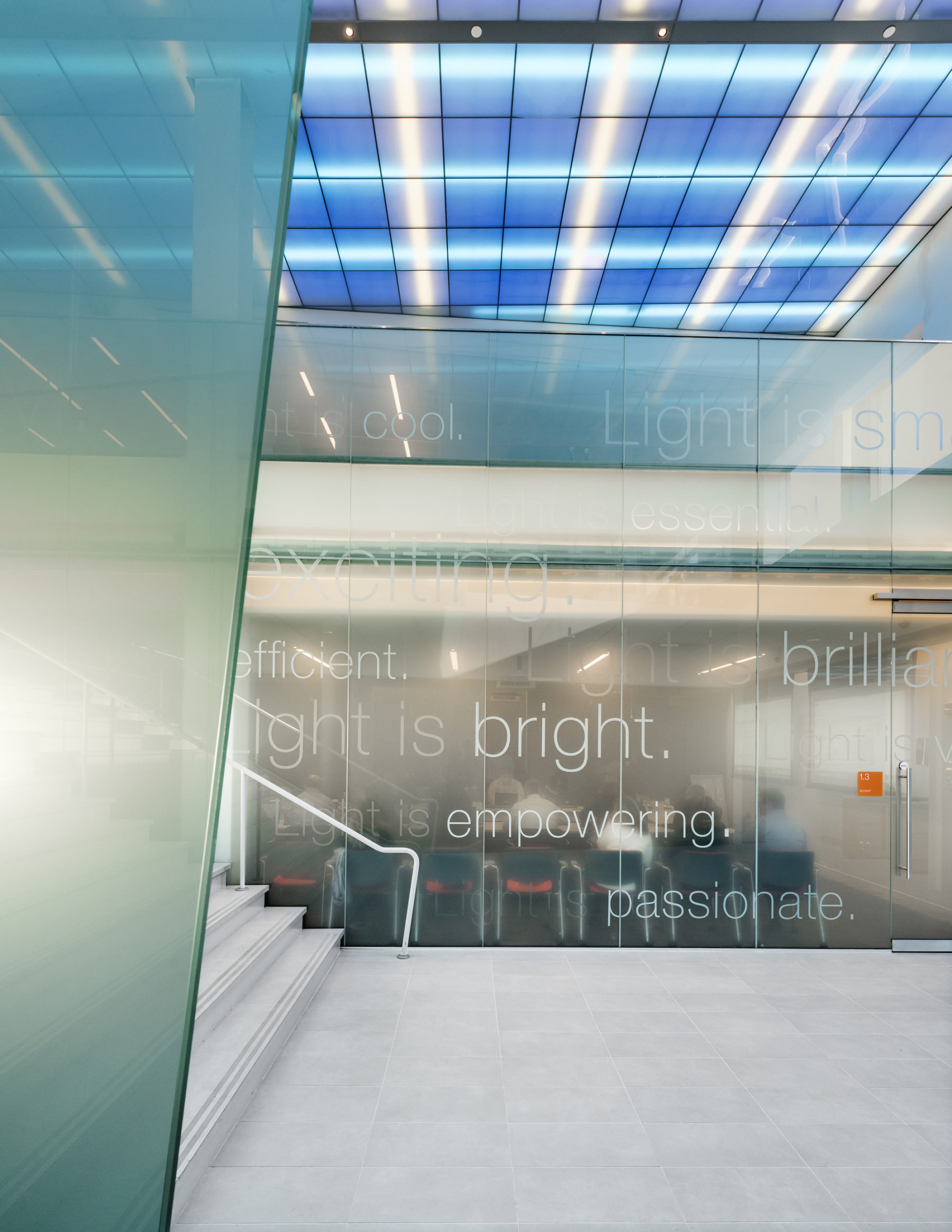
Osram Americas Headquarters
It’s true that overarching trends of collaborative open space, artful finishes, ample natural light, and variety of program are generally appealing to workers across the board—WeWork, does capture these trends well—but the application of these trends as a broad-brush solution can only provide so much return for companies. For companies that prioritize investing in their people, brands, and client experience more strategically—as every company should—a designed office that conveys who they are is a vital asset that pays off over time. And as more and more companies try to cut corners on office design, letting brand live only in the digital realm, it will increasingly become an impactful differentiator.
In workplace design, there is a pendulum swing between over-designed and under-designed environments, but the equilibrium, by very definition, is of course somewhere in the middle. It resides in attention to unique client and human needs. It comes from careful listening and observing. It comes from translating unspoken needs into elegant right-fit designs. And that kind of hand-crafted product can’t be bought off the shelf.
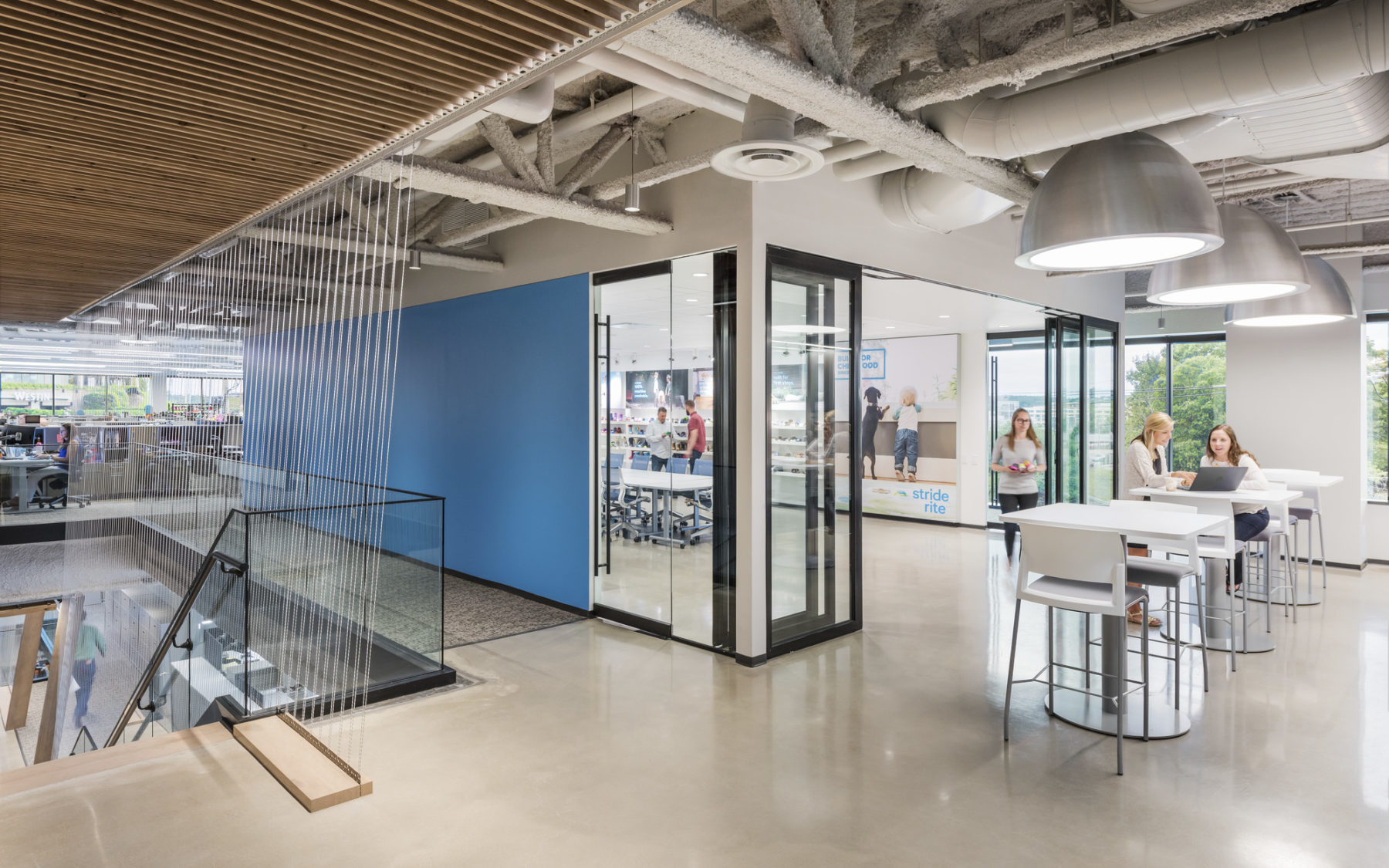
Wolverine Worldwide, a shoe company, incorporates product showrooms for each of its brands, which include household names like Sperry, KEDS, Merrell, and Saucony. Connecting stairs open onto shared kitchen areas and a shoelace screen literally ties all floors together.